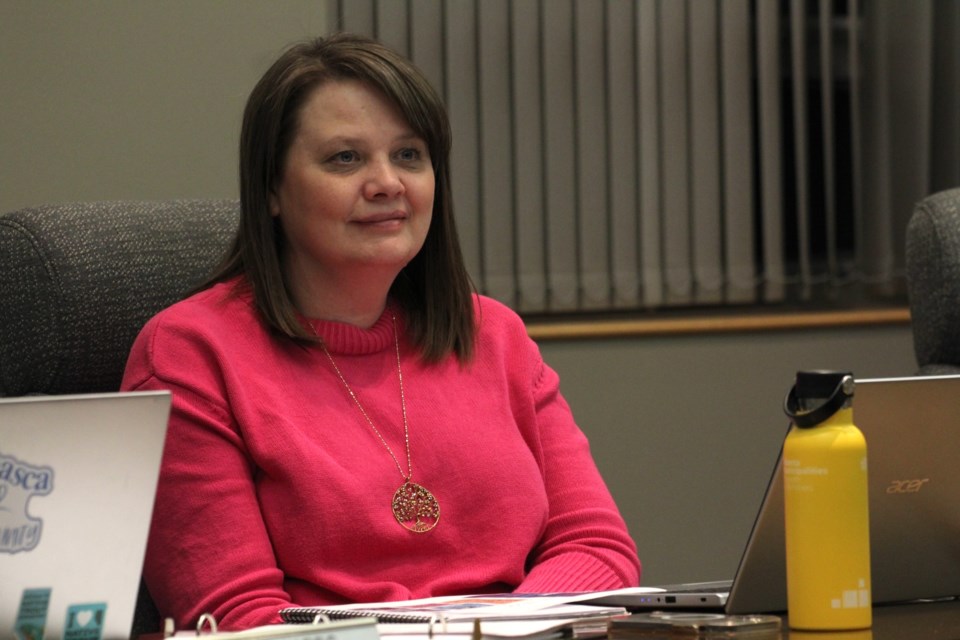ATHABASCA — Town of Athabasca councillors have agreed to add their voice to the growing pushback against the federal carbon tax by way of a letter to the prime minister himself.
During their June 18 regular meeting, town councillors unanimously agreed to send a letter to the government of Canada after receiving correspondence from the office of Lakeland MP Shannon Stubbs.
In a June 12 email sent to several municipalities — Stubbs’ office staff were unable to confirm how many — the Conservative Party MP put out a call for specifics on the fee’s consequences on bottom lines.
“Real numbers of impacts are being used to push back not only against the carbon tax but to show the need for assistance to municipalities as costs continue to rise,” read the email.
The MP’s office asked communities to provide any numbers possible to demonstrate how expenses are rising due to the carbon price to better inform Stubbs’ ongoing advocacy against the tax.
“It’s very fair to say it’s impacting us,” said Mayor Rob Balay. “Can we say to what degree? No.”
The town’s letter won’t contain dollar amounts pertaining to how much tax was paid in different departments, as requested in Stubbs’ letter, due to the burden of administration time required.
“Currently, we don’t have a breakdown of what we pay,” chief financial officer Jeff Dalley told councillors. “We’d have to go through 12,13 months of bills and take the carbon tax off every single one.”
But using a template included in Stubbs’ correspondence, councillors opted to direct administration to write directly to Prime Minister Justin Trudeau to call for cessation of the carbon tax.
Though 90 per cent of the funds collected are returned to Canadians through rebate payments, and Albertans receive more from Climate Action Incentive payments than any other province, dollars aren’t redistributed as equally as they’re collected.
“As individuals, we do get rebates back. We, as a municipality, do not,” said Balay.
Coun. Sara Graling threw her two cents into the discussion, noting the fee is a means to a bigger-picture end.
“The carbon tax is intended to make use of carbon more expensive, and that is the incentive: to redirect away from carbon usage,” said Coun. Sara Graling. “It’s doing exactly what it was intended to do, whether it’s palatable or not for consumers.”
Balay pointed to two environmentally conscious projects on the town’s to-do list that have been pushed due to a lack of government funding, noting movement towards a net-zero future is two-way street.
“We’ve also been unsuccessful in every federal grant we’ve applied for for green initiatives, so I want to send a message that they’re not doing their job, either,” he replied.
The town had applied for the Green and Inclusive Community Buildings program for the photovoltaic project planned for the multiplex, as well as a complete solar and geothermal retrofit for the Old Brick School.
Over $2 million, or 80 per cent, of project expenses for each the multiplex solar installation and the Old Brick School were eligible to be covered by grant funding. Both grants were unsuccessful, and the $1.5 billion fund is now closed.
In a June 27 interview, Balay said utility costs for municipal facilities are the main driver behind the town’s carbon costs, like the multiplex, the library, and the Nancy Appleby Theatre.
He also pointed to costs for utilities at the wastewater treatment lagoons and the Athabasca Regional Water Commission as areas eating up more municipal money thanks to the tax.
Tax impact study
In 2022, Rural Municipalities of Alberta (RMA) partnered with Nichols Applied Management economic consultants to conduct a case study on the future impacts of carbon tax coming down the pipeline for communities in the province.
The study, published in 2023, looked at four municipalities with varying population and geographic sizes, length and number of roadways, population density and more to estimate how much carbon tax counties could be paying by 2030.
After analyzing expenses for heat (natural gas), power, and fuel in Northern Sunrise County, Parkland County, and the M.D. of Willow Creek, the study noted carbon tax made up between 0.2 and 0.4 per cent of municipal spending in 2021.
By 2030, Nichols has estimated carbon tax will jump to between one and 1.7 per cent of budgets in said communities. These calculations are based on the assumption that amounts of natural gas used for heat, traditional fuel for vehicles, and electricity produced by fossil fuels will remain unchanged over the next six years.
“It doesn’t sound like one per cent is a lot, but if you have a $50 million budget, it adds up to a lot of money,” said Balay.
In a recent move towards energy efficiency, the town purchased a new Ford Lightning electric truck for the Parks department — a move met with skepticism and anger from residents online.
Related: Town of Athabasca caught off guard by uproar over electric truck
While Balay couldn’t say whether or not the tax would reduce the town’s carbon use by 2030 as intended, he voiced his opinion on the fee’s effectiveness to make changes.
“Hopefully it would reduce the carbon footprint, but I’m doubtful,” he said. “We’ve had the carbon tax in place for several years and all we’ve done is managed to maintain where we’re at, status quo.
“To me, it hasn’t accomplished what it was set out to do.”



